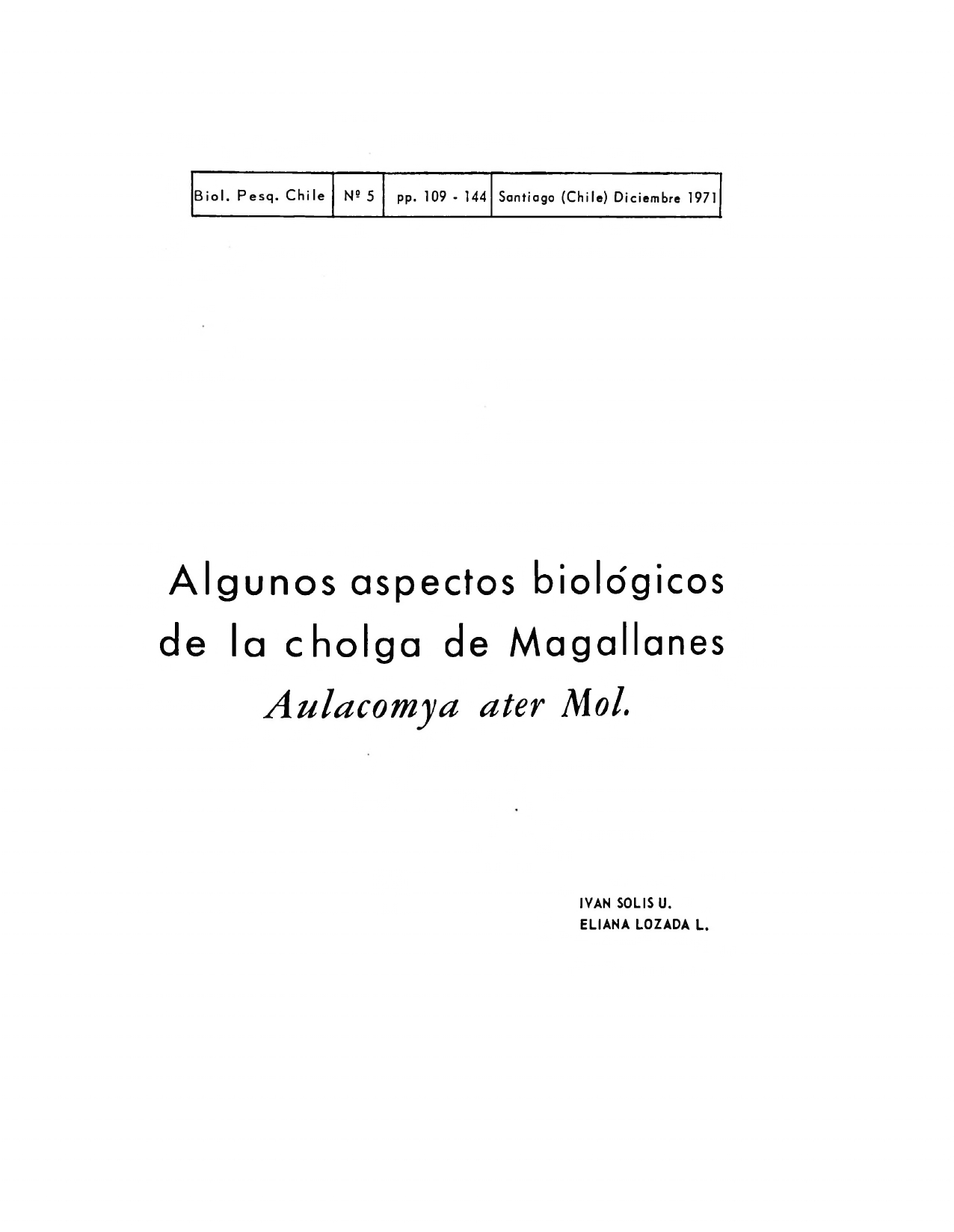Algunos aspectos biológicos de la Cholga de Magallanes Aulacomya ater Mol.
DOI:
https://doi.org/10.21703/0067-8767.1971.5.2386Abstract
With the purpose of knowing the main biological characteristics of the Aulacomya ater in the Magallanes region (53º 12’ S 73º 05’ W), a research was carried out. Parallel to this, comparisons were made with mussels of the same species but from other regions, such as: Antogagasta (23º 01’ S 70º 31’ W) and Chiloé (42º 27’ S 73º 45’ W).
-
Chiloé mussels having the same size, are wider than those grown in Magallanes however, the height of valves are practically the same.
-
The growth of the Magallanes mussel is larger than the one observed in the species of Chiloé and Antofagasta. This can be appreciated after the second year of life. Theoretically, a four-year species in Antofagasta reaches a size of 64 mm., in Chiloé 108 mm. and, in Magallanes, 122,4 mm.
-
The mussel starts to get prepared for reproduction approximately in June, and, the period covered from this date through September will be considered the pre-spawning season. The largest number of species in spawning and already spawned are found during the period of November through February. This phase is simultaneous for all sizes.
-
The weight of the mussel meat (dehydrated) of the Magallanes samples up to 60 mm. is lower than the Chiloé ones. In the case of those having larger sizes, for example, when they reach 150 mm. the difference is of 3,6 grams in favor of the Magallanes mussel.
-
From the above-mentioned, we can conclude that the specimens of Magallanes show a better growth when compared with others of the same species for other zones of the country.
References
Astudillo, V., et al. (1968). Elementos de bioestadística. Universidad de Chile, Facultad de Ciencias Pecuarias y Medicina Veterinaria. (Mimeografiado).
Bertalanffy, L. von. (1938). A quantitative theory of organic growth. Human Biology, 10(2), 181–213.
División de Pesca y Caza. (1969). Anuario estadístico de pesca. Ministerio de Agricultura, Servicio Agrícola y Ganadero, División de Pesca y Caza.
Lozada, E. (1968). Contribución al estudio de la cholga Aulacomya ater en Putemún. Biología Pesquera, 3, 3–39. https://doi.org/10.21703/0067-8767.1968.3.2371
Saelzer, H. (1968). Observaciones sobre el ciclo de reproducción y crecimiento anual de Aulacomya ater en la zona de Concepción. Universidad de Concepción. (Mimeografiado).
Solís, I. (1967). Observaciones biológicas en ostras (Ostrea chilensis Philippi) de Pullinque. Biología Pesquera, 2, 51–82. https://doi.org/10.21703/0067-8767.1967.2.2361
Tomicic, J. (1966). Contribución al estudio de la cholga Aulacomya ater (Molina), en la Bahía de Mejillones. [Memoria de prueba, Universidad de Chile].
La cholga de los bancos de Mejillones. (1968). Apuntes Oceanológicos, 4, 14–15.




